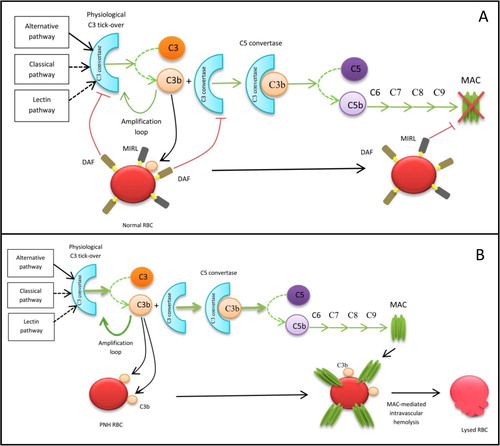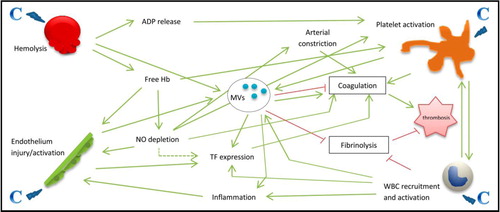Figures & data
Fig. 1 Action of complement in healthy subjects (A) and PNH patients (B). (A) Due to the presence of membrane proteins, DAF and MIRL, a normal RBC is protected from complement activation. (B) DAF and MIRL deficiency makes the RBC sensitive to complement attack, resulting in haemolysis. RBC=red blood cells, MAC=membrane attack complex.

Fig. 2 Overview of the multiple mechanisms involved in the occurrence of thrombosis in PNH patients. Complement (C) activation is responsible of haemolysis, platelet activation, endothelium injury and activation, and white blood cell (WBC) recruitment and activation. From there, multiple mechanisms induce a hypercoagulable state with the occurrence of thrombosis. Note the central role of extracellular vesicles (or microvesicles: MVs). ADP=adenosine diphosphate, Hb=haemoglobin, NO=nitric oxide, TF=tissue factor.

